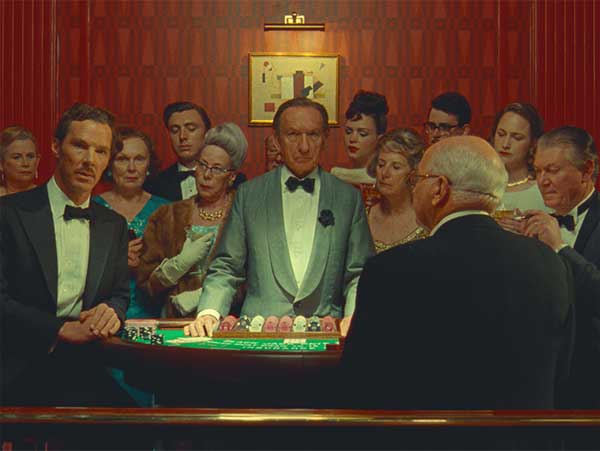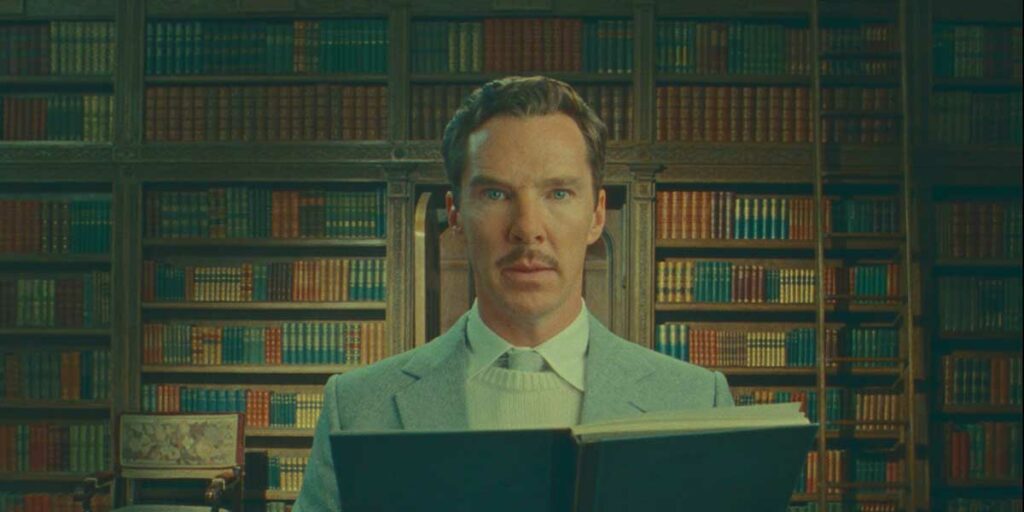Short but very sweet, The Wonderful Story of Henry Sugar is a concentrated dose of Anderson’s symmetrical style.
The Wonderful Story of Henry Sugar is the second Roald Dahl adaptation directed by Wes Anderson, but the basic plot sounds like something Anderson might have come up with himself. When a wealthy playboy (Benedict Cumberbatch’s titular Mr. Sugar) seeks out the methods of a guru to help him cheat at gambling, one can imagine any number of things going awry, all so that Mr. Sugar can learn not to cheat. A simple and valuable lesson gets an elegant treatment from Anderson (here bouncing back after the handsome but emotionally-lacking Asteroid City). With Netflix allowing Anderson to do much as he wishes with this story, he creates a memorable but still very Anderson-ian little entry to his already-burnished CV.
Henry Sugar slides into the Venice Film Festival almost like an afterthought in between any number of big hitters, its brief runtime concealing some surprises and subversions that both beef up the runtime, and deepen it more than even Dahl himself might have intended. For one thing, Dahl himself is our narrator. Dahl is played with grandfatherly charm by Ralph Fiennes, and we find him ensconced in his famous writing shed, a writing board in his lap and cigarette smoke in the air. Despite portraying a very real man and place, the film goes out of its way to highlight the production’s artificiality. Wes Anderson films are wont to do that, but Henry Sugar takes this artifice to a whole new level.
Despite the film’s relative brevity (Just 39 minutes), Anderson challenges himself with The Wonderful Story of Henry Sugar. The production hits levels of theatricality that could surprise even his most ardent fans. Asteroid City has scenes set in a theatre, but the stagebound sensibility of Henry Sugar is what sets it apart from any film Anderson has made before. His sets are garishly coloured as usual, but the he often uses spot lighting, and the sets fall apart and move aside to reveal new locations, like prop walls on a stage. Settings and timelines are more likely to change with the movement of a wall than they are with a cut. The various narratives emerge from each other like Russian nested dolls, and are just as fun and colourful. From any other director, this has the potential to annoy, but we can forgive some indulgence from arguably the most visually identifiable director working today when it all looks so handsome.

The characters and cast are as colourful as the sets. Fiennes aside, Henry Sugar features a raft of new additions to Anderson’s roster. From Dahl’s shed, Fiennes walks over to Sugar’s mansion, where Cumberbatch sits waiting to take over. With his clipped accent and slim build, Cumberbatch may be the most Anderson-ian actor who had yet to work with the director, and he fits right in to his vision. He opens a book detailing the story of the The Man Who Sees Without Using His Eyes (Ben Kingsley), and the sets fall and rise again to create a scrubbed-white hospital, manned by doctors Dev Patel and Richard Ayoade. All the actors are enjoying the long monologues they have to memorise, though Patel is arguably the biggest revelation, taking to Anderson’s rhythms and methods like a duck to water.
Fans of Anderson will find much to like in The Wonderful Story of Henry Sugar, from the anachronistic special effects to the typically sped-up pace of the dialogue. Its biggest selling point, though, is how undemanding and fun it is. Dahl wrote Henry Sugar to counter accusations he was overly miserable and scary for children, and teaching them too harsh a lesson in the process. By keeping things light, and even threatening a totally happy ending for once, Dahl was on to a winner. Anderson is too.
The Wonderful Story of Henry Sugar premiered at the 2023 Venice Film Festival on September 1 and will be out on Netflix from September 27. Read our list of films to watch at the 2023 Venice Film Festival and discover the 2023 Venice Immersive Lineup!

